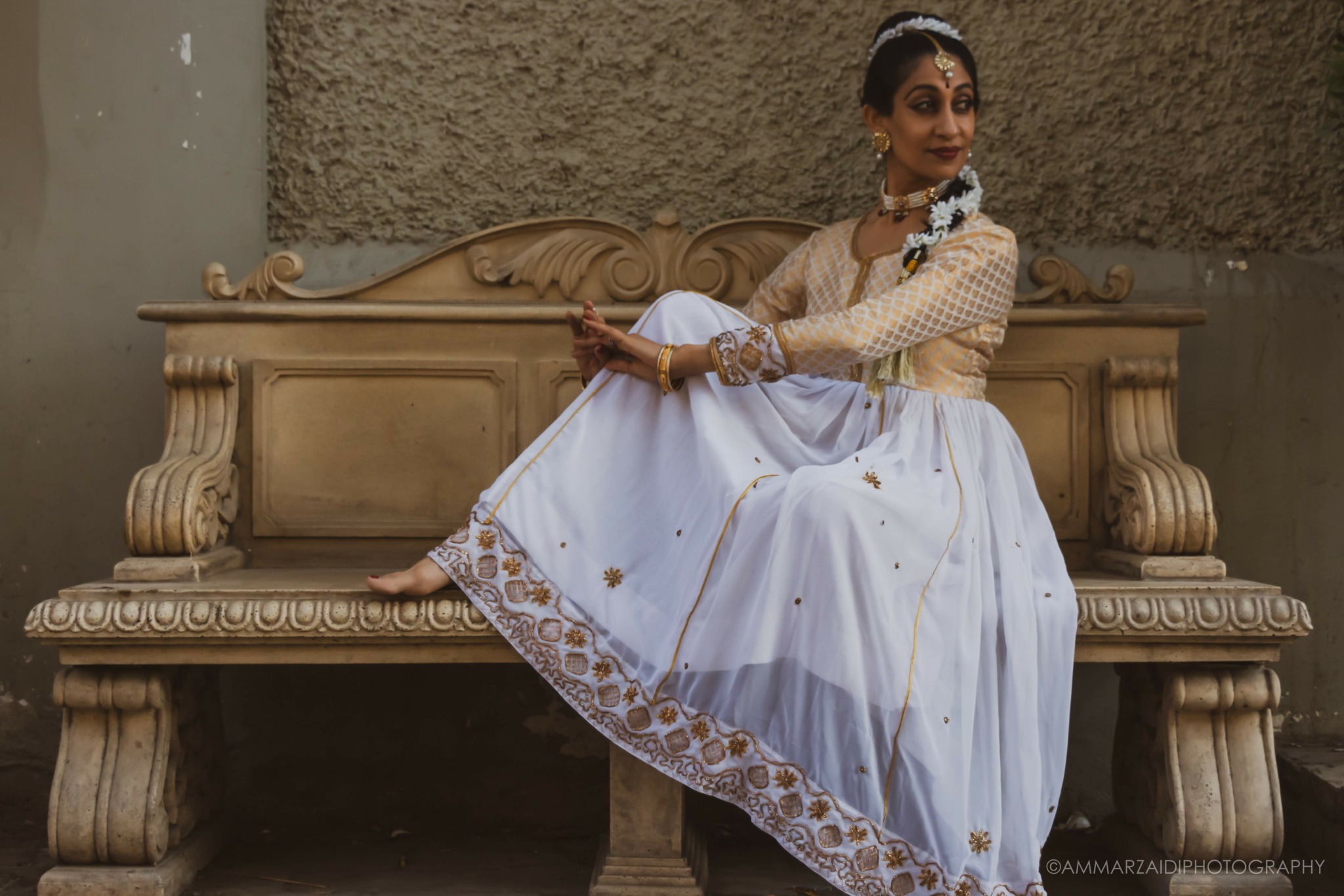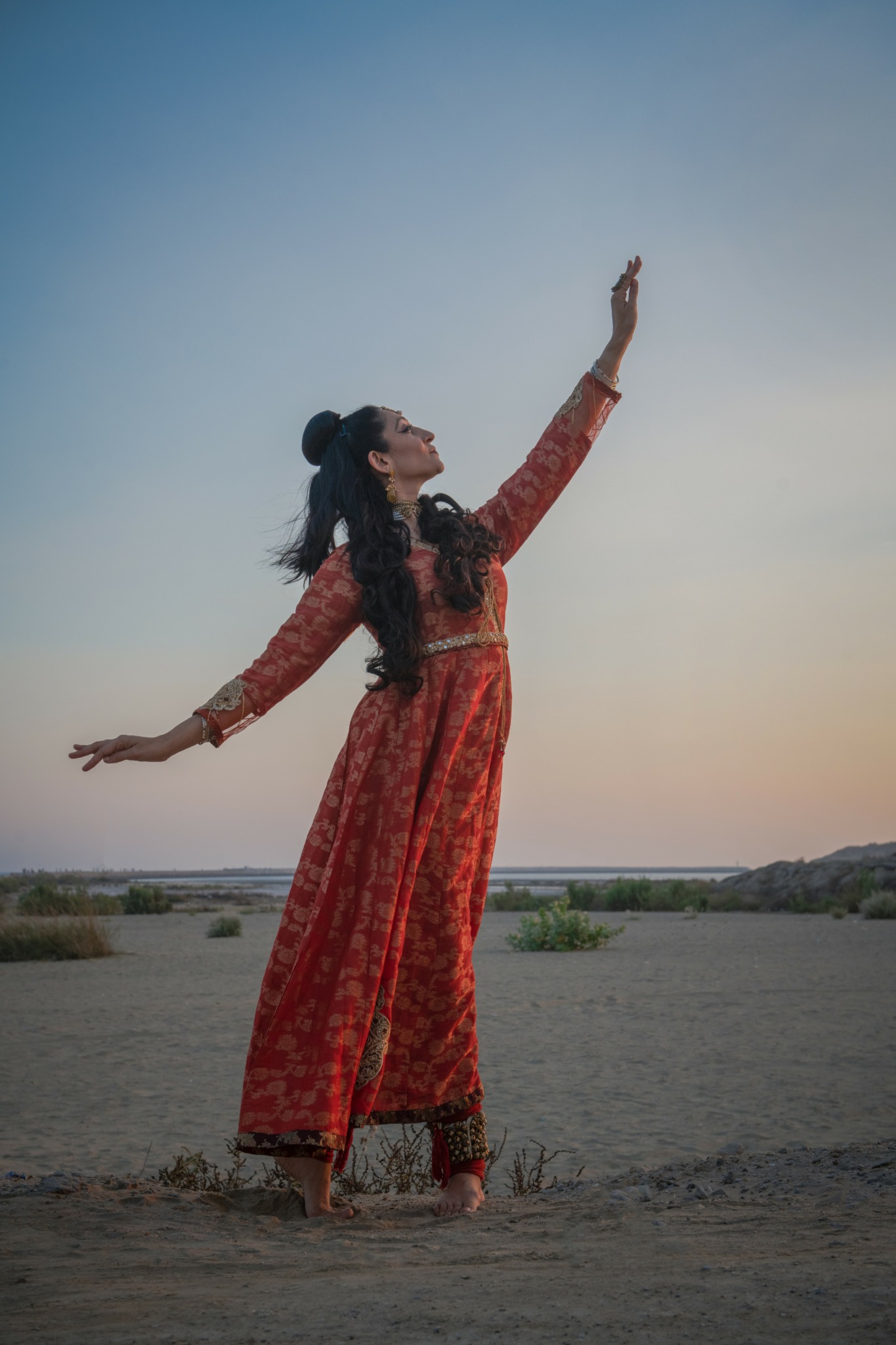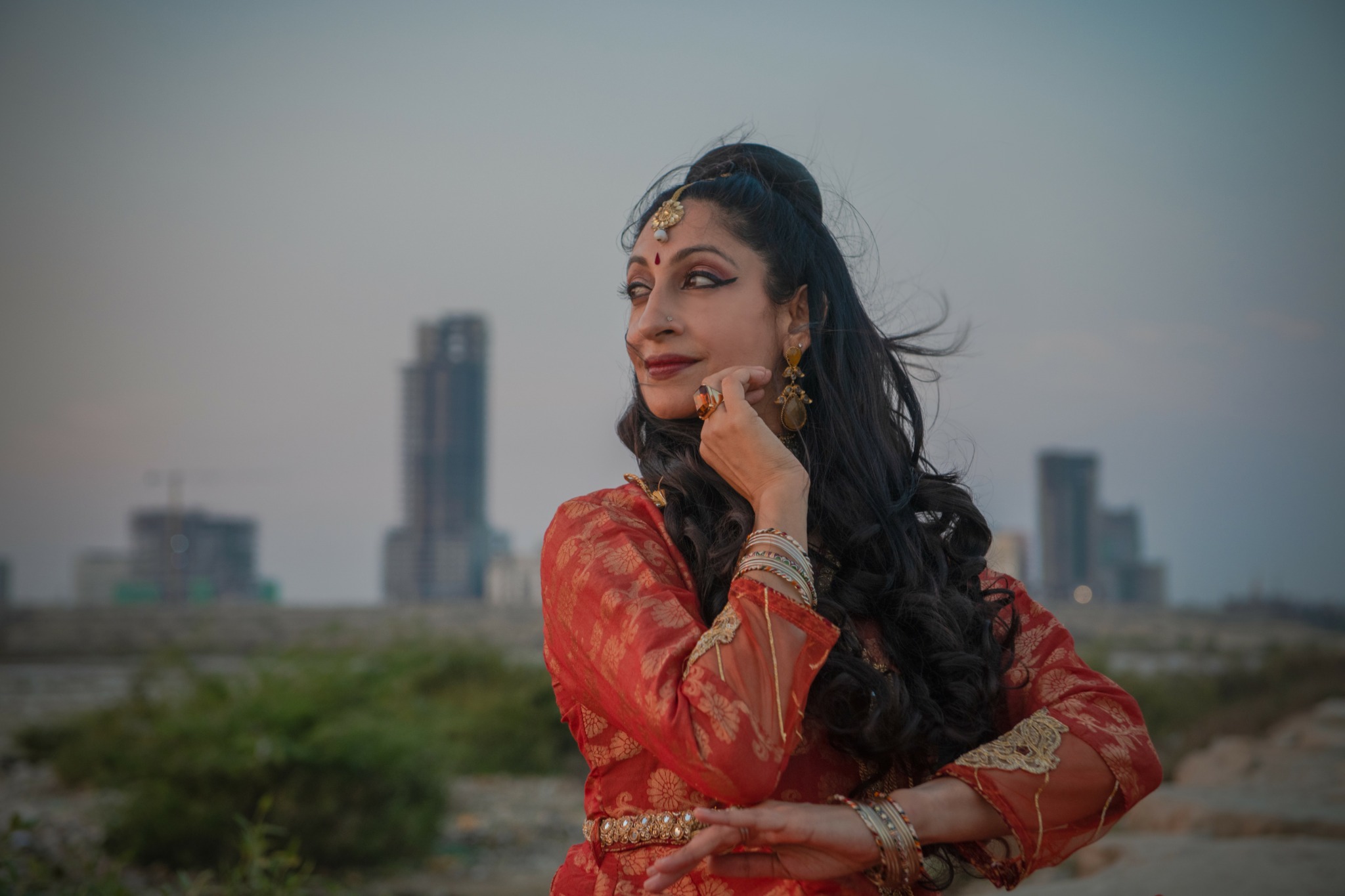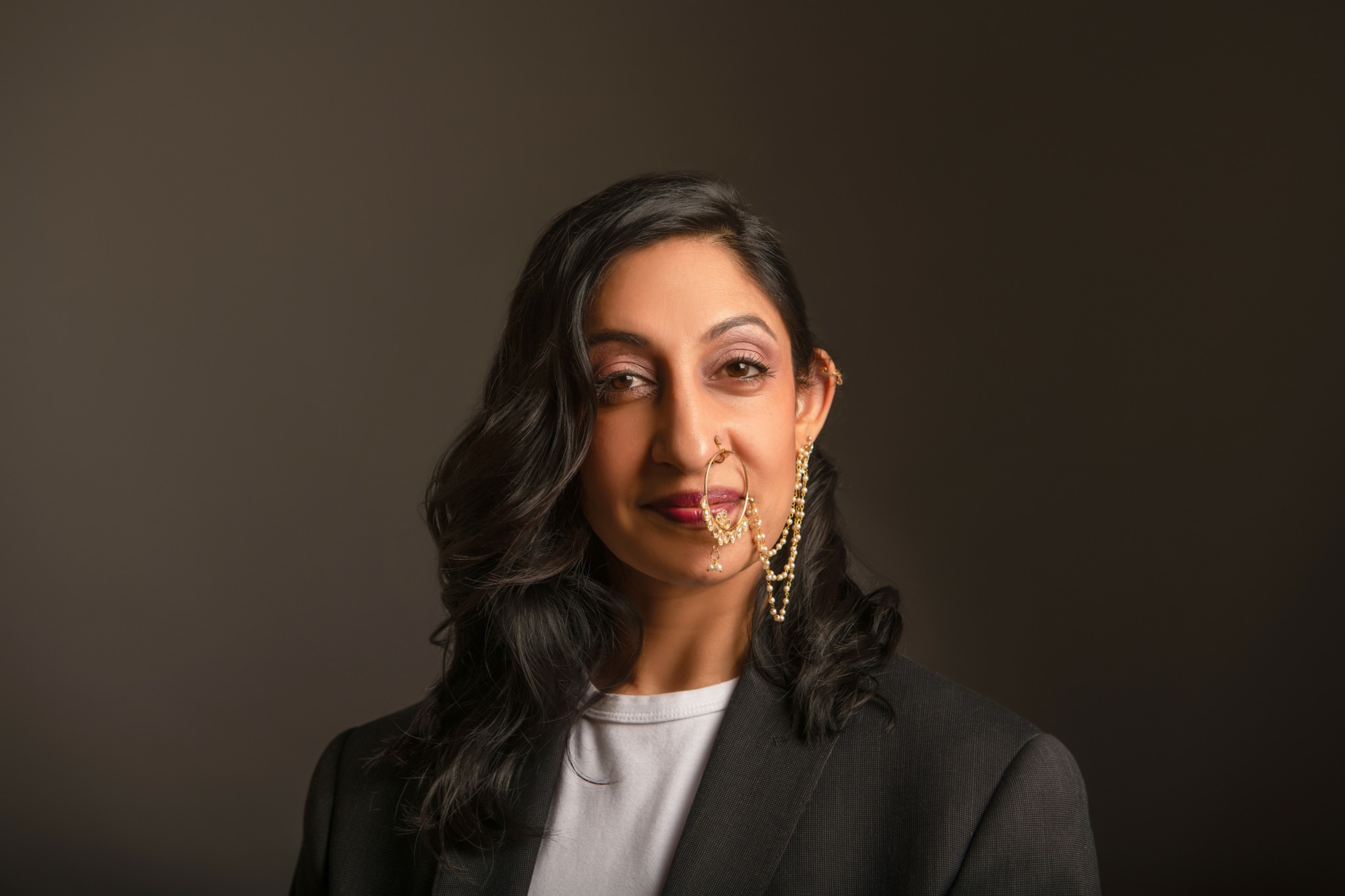Alright – so today we’ve got the honor of introducing you to Farah Yasmeen Shaikh. We think you’ll enjoy our conversation, we’ve shared it below.
Alright, Farah Yasmeen thanks for taking the time to share your stories and insights with us today. What did your parents do right and how has that impacted you in your life and career?
I began my training in the art of Kathak when I was 18 years, and a freshman in college. Though I didn’t choose to major in dance (I was instead a Womens Studies major), it became clear very early on in my study of Kathak, that it was going to be a big part of my life. My parents were immigrants from Pakistan, and it was not uncommon for many of my peers of South Asia origin to be pressured by their parents to follow very particular educational paths that would lead to high paying careers. Most often, they were strongly encouraged to become doctors, lawyers or engineers.
As the youngest of three children, my parents always encouraged each of us to follow the path that called out to each of them. Each of us found a career in social service! For me, this has been through the arts.
From age 5-18, I dedicated much of my time to a dance organization that provided learning of ballet, jazz, baton twirling, and overall development of body awareness through dance and movement. When I started my undergraduate studies at San Francisco State University (SFSU), I was eager to continue dancing. That is when I enrolled in an unexpected course of Kathak offered at the university.
Upon beginning my journey in Kathak, it was hands down my father’s words of encouragement that actually motivated me to enroll in the class. An emphatic, “You must take the class – he (the teacher who eventually became my guru) is one of the best!” My parents exposing me to Pakistani and Indian music at home, hosting music parties, and taking us to concerts of legendary artists, is what gave me the early exposure and subtly planted the seeds of my interest in the South Asian arts.
Without the direct experience of benefitting from my parents’ love and patronage of our cultural arts, and their unwavering support of my pursuit of life as a dancer (literally to present day), I would not be living out my dreams and passion!

As always, we appreciate you sharing your insights and we’ve got a few more questions for you, but before we get to all of that can you take a minute to introduce yourself and give our readers some of your back background and context?
Farah Yasmeen Shaikh is an internationally acclaimed Kathak artist – performer, choreographer and educator, and Founder & Artistic Director of Noorani Dance. Kathak is a classical dance of South Asia, though it originated in North India, Farah is very intentional about using the terminology and reference of “South Asia”. Emphasizing the importance of the history of this region, especially with regards to the 1947 Partition in which India became independent from British rule, and became India and then East and West Pakistan, eventually East Pakistan became Bangladesh. Kathak specifically having been developed in North India, of which one of the cities in which it really evolved significantly was Lahore, which is in present day Pakistan. The use of the term “South Asia” is a reference for the geographic reclamation, but even more so, an acknowledgement of the shared culture and artistic traditions shared across the man made borders. This simple use of terminology has set Farah apart from many of her contemporaries, globally, and has informed her artistic approach on all levels.
Known for her evocative storytelling, technical precision, delicacy and grace, Farah received two decades of training from Pandit Chitresh Das, and has gone on to develop a unique artistic voice, while also maintaining the classical elements of Kathak. Farah’s solo performances and choreography on Noorani Dance Company, often address topics of historical and social relevance, evident in her traditional and innovative works including “The Forgotten Empress”, “The Partition Project”, “Nazaakat aur Taaqat – A Delicate Power”, and “Saabit Qadam – Perseverance”.
In early 2020, Farah launched a podcast, “Heartistry” – engaging in conversations with inspirational guests from across the globe that are bringing a passion, compassion and commitment to whatever it is they are doing. The podcast is a perfect example of Farah always using her platform to amplify the voices of others. Farah is a TEDx speaker, an Arts Commissioner for San Mateo County, and a public speaker on various topics related to art and social change.
Farah and Noorani Dance have received numerous grants and awards that include NEA, Walter & Elise Haas Fund, New England Foundation for the Arts, Gerbode Foundation, Zellerbach Family Foundation, Alliance for California Traditional Arts, California Arts Council, Mid Atlantic Arts Foundation, and others. Since 2015, Farah has been performing and teaching throughout Pakistan, and is now a sought after presence and contributor to the cultural arts landscape in Pakistan, and around the globe.

Is there a particular goal or mission driving your creative journey?
There is no denying my love for dance, and upon embarking on my journey with Kathak, the way it connected me to my own culture and history, deepened that love even more. However, there have been times where I felt burnt out. The artist hustle is real – to say the least!! And now in my late 40’s, having spent almost 30 years training, performing and teaching Kathak, there are definitely days where I wonder how much longer I will be “doing this”. However, then I’m reminded in one way or another that it isn’t about me, and that I have a greater responsibility that I must remain committed to.
As a Pakistani American Muslim female Kathak artist, I am certainly somewhat of an anomaly in my field. There are many factors as to why we don’t see many Pakistani women – in or out of Pakistan – taking on dance as their profession. Fortunately for me, my family always encouraged me, and still do so to this day.
That said, I embrace the fact that I am an example to others with my ethnic and religious background, as someone who is taking pride in our artistic and cultural heritage, and can hopefully inspire others to do the same. I’m also aware of the fact that I can bring a unique perspective into my artistry, how and what I teach, and what I perform. I ensure that all of this comes from an authentic place creatively, but one that further encourages me to take risks.
I also feel a sense of responsibility in using my privilege as an American to use this medium that has been gifted to me, whether working in Pakistan, or representing a more diverse South Asian community here in the US.
All of this is to say that at some point, I will find a next chapter – however and whatever that may be – in or out of the arts. But, until that calls me loudly, I am committed to honoring my role and responsibility in this way.

We often hear about learning lessons – but just as important is unlearning lessons. Have you ever had to unlearn a lesson?
In being trained in Kathak for almost 20 years by my Guru, a world renowned master, it was always ingrained in me that one must remain loyal to the Guru. My Guru was a traditionalist in so many ways – old school, hard core, often steeped in tough love, and his lessons existed on and off the dance floor.
In 2014, after 18 years of in depth training, I could no longer ignore a change that had been brewing for a few years in my relationship with my Guru. The environment within his dance company and school had shifted in a way in which it was no longer fostering growth for me as a dancer, nor as someone that I felt could positively contribute to, or be aligned with.
I decided to attempt to navigate this path on my own. I needed to take risks, learn from them, not feel controlled by others, and keep moving forward. GuruJi and I did not part on good terms, and generally speaking, stepping away from the Guru is most often frowned upon in traditions such as Kathak, but carrying the dance forward on my own felt like the best way to continue to honor his teachings, and enable me to discover my own artistic voice.
Though this ended my direct relationship with my Guru, more deeply connecting with my dance outside of what had become a negative and toxic environment, allowed me to rekindle the many lessons he shared on and off the dance floor, and reunite me with the reason I do what I do – to deepen my commitment to it, and to share the gifts he gave me over the years. Just as the time of initiating my study with Guru, I believe this pivotal shift in my journey was my kismat.
I had to unlearn what had been passed on as the value system in this artistic tradition, and instead learned to put myself, and what I felt could be my potential, as the priority. It took courage, and there was certainly a fall out initially, but I have no doubt that I made the right decision.
Contact Info:
- Website: https://farahyasmeenshaikh.com/
- Instagram: @farahyasmeenshaikh
- Facebook: @farahyasmeenshaikh
- Linkedin: https://www.linkedin.com/in/farahyasmeenshaikh/
- Twitter: @farahyshaikh
- Youtube: https://www.youtube.com/@nooranidance

Image Credits
Humayun Memon
Ammar Zaidi


